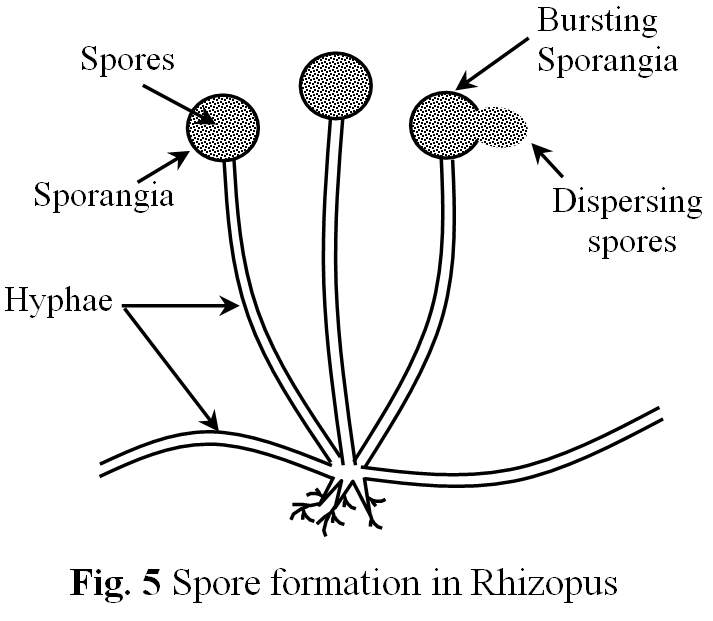Spore formation is a method of asexual reproduction which is found in non flowering plants such as fungi (Rhizopus) and bacteria. In this method of reproduction, the parent plant produces hundreds of tiny spores which can grow into new plants. The spores are the microscopic, tough and resistant bodies which are round in shape and can grow into a new plant under suitable conditions. We shall now discuss the formation of new plants by spores by taking the example of fungi called as bread mould or Rhizopus.
In Rhizopus numerous spores are produced within sacs called sporangia as shown in the figure. The sporangia are knob like structures which are present at the top of the thread like structures called hyphae. When these sporangia bursts, the spores are scattered by rain, wind or insects and under suitable conditions develop into a new Rhizopus plant, when they fall on a suitable substance like bread.

Types of Spores
The spores are of two types:
1. Aplanospores
2. Zoospores
Aplanospores
These are non-motile spores. These spores are non-motile due to the absence of flagella in them.
Zoospores
The motile spores are called zoospores. These spores are motile due to the presence of flagella in them.
Test Your Understanding and Answer These Questions:
- Explain spore formation method of asexual reproduction in nonflowering plants.
- Write a short note on sporangia and hyphae.
- What are aplanospores?
- What are zoospores?
